Catalogue and magic properties of the stone -->rus
Zircon
 Description characteristic of the mineral.
Description characteristic of the mineral.
Silicate of zirconium of Zr[SiO4], a color is most various: brown of different tints, sometimes white, colourless, rarely red, green, yellow, gold, black. Zolotisto-krasnye stone name hyacinths. Besides the most beautiful golden-yellow and red zircons there are brown, chlor and sky-blue stone. Their color is determined the admixtures of iron Fe, copper, zinc, calcium, titan and by some rare-earth elements. Unlike a diamond has solidity 7,5 (more soft Sapphire). Be found as the well cut pointed crystals. Sizes of crystals usually small (a few millimetres), the large are consider zircons more than 10 mm. On jeweller business brown zircons which after burning acquire magnificent a blue color are used. In factory jeweller wares to purchase natural Zircon (but not fianite) today practically unreal, it is very rare stone, although before they met enough often.
Zircon (natural stone) is known from old times. As admixtures zircons can contain iron Fe, calcium, aluminium, rare-earth metals, hafnium, strontium, scandium, thorium, uranium, beryllium, niobium, tantalum, phosphorus and other Yellow, straw-yellow and smoke-coloured zircons sometimes name the Siamese diamonds. Starlit or starlite - Zircon with natural or got after thermo-chemical treatment the celestial-blue colouring. There are green and lilac zircons. Nature of colouring of zircons since olden times came into the notice of researchers.
Zircon be found as the well expressed crystals the type of which changes depending on the terms of forming from long-prismatic (in granit pegmatites and granites) to dipyramidal (in alkaline and metasomatism rocks). Sometimes there are twins, knee twins and sheaf-like or radially-radiant accretions. Crystals, as a rule, comparatively small (by a diameter only a few millimetres), now and then large zircons are marked by mass in ten and even hundreds of carats. Brilliance is strong, glass to diamond, at transparent stone - fat to mat, on a fracture to resinous. Indexes of refraction at different zircons, as well as closeness, vary considerably.
The mine deposits of jeweller zircon are very rare, although Zircon as accessory (included in composition) mineral is widely widespread in alkaline magmatic rocks, pegmatites, albitite and other The basic source of jeweller stone are mine deposits of Thailand, Kampuchea, Vietnam, Sri Lanka and Madagascar. There are also mine deposits of jeweller zircon in Burma, USA, on the Korean peninsula, in Brazil, Canada, Norway, Australia, Tanzania. In Russia jeweller zircons meet on Ural and in the kimberlite and alluvial mine deposits of diamonds in Yakutia.
Zircons of jeweller quality in any deposit make insignificant part. Transparent colourless and beautifully painted zircons are processed with the use of the diamond (for light zircons) or step (for zircons with the thick colouring) cutting. Cabochon make out of less transparent stone. Demand on zircons and their cost not stable. The blue ennobled zircons are most popular only. Zircons of crayon-dark blue color are especially valued. Before natural colourless zircons were used as the most successful substitutes of diamonds.
Now on changing synthetic fianites came them, from 1972 for 30 years fully supplanting exclusion all of other substitutes of diamonds from a jeweller market (both natural and synthetic stone). Synthetic Zircon (zirconium, fianite) on the composition strongly differs from natural zircon. If natural Zircon is the silicate of zirconium (salt of silicic acid) and synthetic never is, fianite (cube Zircon) is the single-crystal of oxide of zirconium, raised for soviet technology and while not having analogues.
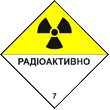 Physical features of natural zircons.
Physical features of natural zircons.
This mineral contains radio-active components. From point of physics of crystals, correct and safe from point of level of radiation (to 19-24 milli-Roentgen/hour) there are natural zircons of small size, relatively transparent, not green and poorly painted - they are painted the negligible quantity of connections of radio-active elements or contain them in two-bits.
If zircons are painted intensively, they are green, opaque or have large sizes, probability is high that it causes the enhanceable natural level of radiation of natural zircons (from 29-32 milli-Roentgen/hour and higher) - them it is categorically forbidden to keep in home collections, expose to the serial and industrial cutting (especially in home terms and shopfloors, where plenty of personnel works). Them it is categorically forbidden to expose to the rays and ennoble in nuclear reactors and transport in great numbers (totally from 29-32 milli-Roentgen/hour and higher). Transportation of radio-active stone is forbidden without the sign of "radiation" and without additional declaration on a custom ("radio-active").
Safely to carry light transparent not green and small natural zircons without depending on their form on hands (in rings and bracelet -"wristlet") and on feet - as possible farther from a thyroid, birth-marks, large birth-marks (especially protuberant), from a breast, superficial lymphatic knots etc. the objects easily struck a radiation on the body of people. In any case from considering of safety and ecofriendlyness it is not recommended to carry natural zircons constantly and to hold the large standards of this mineral in an apartment or working cabinet (a house and apartment is a not mineralogical museum with the possible level of radiation from 32 to 120 milli-Roentgen/hour and higher for special exposition of stone and mineralogical special stone archives).
Dangerous is a direct contact with a body and carrying on the body of point and diffuse sources of radiation and radio-active components (an about 50% radiation is taken in at a contact with the external surface of body and an about 100% radiation - at a reception into a radio-active or infected object).
Magic properties of stone.
Talisman of criminal lawyers, judges, all, trying to disrobe deceptions and frauds. Vicious people, giving him complete freedom, Zircon very often leads for a lattice, because stone is undefamed and does not love such people. Vain he can "put" also, disgracing them in public.
Zircon of clean and bright yellow-brown color, as the firmly brewed Indian tea or cognac, is capable infuses with a confidence and helps to disrobe deceptions. On the East he is named the "younger brother of the diamond". Improves mental abilities of the possessor, excites in him aspiring to sciences and to cognition of truth. Strengthens memory, promotes quick wits. Zircon of blue color is an amulet of travelers.
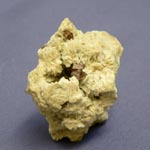
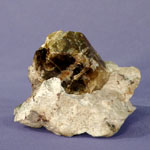
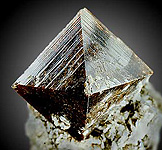
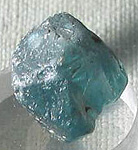
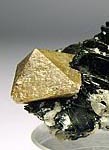
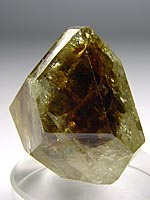
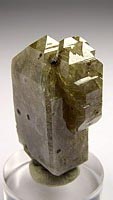
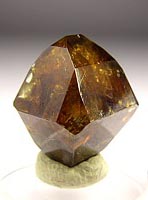
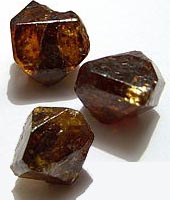

HYACINTH (Hyacintos jacinth)
 Description characteristic of the mineral.
Description characteristic of the mineral.
Transparent variety of zircon of red, rose and orange tints. Hyacintos jacinths - so ancient greeks named a flower hyacinth (dark blue, violet, purple colors). At carrying of hyacinth it is necessary to observe a carefulness, because he is fragile and cleaved facet chips splits and notches appear easily on him. Therefore well, that wares had frames of protective type. Suitable for jeweller aims material be found only in not many places from which most essential is Ceylon. Here, in rich in the semiprecious stone of pebbles shingle stone, zircons are found practically all of possible for this purpose jewel of colourings, including russet, yellow and green different tints. Term a hyacinth is often used on Ceylon wrong, because also reddish Garnets, meetings there designate them, where and zircons.
Hyacinth (century-old name - peradol) - red-yellow- and crimson raspberry pink-orange, red, brown-red, brown Zircon, colouring of which reminds the color of blood and hyacinth is a flower, reared, on an ancient greek myth, by Apollo from the body (or to blood) of wonderful youth of Hyacinth, favourite Apollo, wind killed god by Zephyr.
Magic properties of stone.
His proprietor is everywhere waited by success, cardiac reception and hospitable roof. It is considered that he brings quiet sleep on, brings pleasant dreams and strengthens forces. Talisman of inexhaustible cheerfulness, useful merchants, artists, people of artistic professions et al, related to the large emotional and physical return. A hyacinth is a talisman of beauty also, attractiveness, tenderness and charm, ability correctly to behave in the most different situations. It is amulet charm talisman and amulet from harmful influences of bad people, from impedimental on the way of moving toward a purpose, averts enemies and pursuers from bad intentions. Talisman of travelers, doing all of roads by lights, averting lightnings and other misfortune. Stone guards and helps to disrobe fibbers, deceivers and get truthful information.
FIANIT (Zircon CUBE)
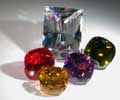

 Description characteristic of the mineral.
Description characteristic of the mineral.
Oxide of zirconium. Synthetic Zircon serves as the substitute of diamonds in jeweller decorations and today very popular. Material-imitator must possess many properties of diamond, but the most important - to be cheap. This task was decided by different people by different ways, and to date the biggest-selling imitator of diamond is fianite.
The name of fianite originates from abbreviation of FIAN (Physical Institute of Academy of Sciences), where beginning of seventieth years of XX century was created this artificial mineral. From abroad "Zircon" or "zirconium" bring in, which on business there is fianites, reared on a soviet license or simply on soviet technology, but disguised under these commercial names. Deviation from correct technology of the directed crystallization of cube crystals causes worsening of quality of fianite (their brilliance and game of light diminishes). The crystal of fianite uncut by appearance is reminded by the crystal of diamond.
It is a not diamond, not natural mineral Zircon and not chemical element (metal) zirconium. Verges chamfered at the cut zircon, at a diamond they are sharp. It is yielded brilliance and game of light of fianites only to the diamonds, excelling all of other stone here. Colourless zircons, though characterized diamond brilliance and game, easily to distinguish from a diamond on low solidity and refraction of light (that allows considerable part of the world, falling on the ground of stone with the diamond cutting, to slip out from the underbody of stone). By sight to distinguish shallow fianites in good from shallow diamonds difficultly.
Magic properties of stone.
Fianit is a synthetic substitute of diamonds and biggest-selling insertion in jeweller wares from gold and silver. In itself no magic characteristics regardless of colouring is not a. It is similar to the empty vessel which everybody can fill with anything on the desire and in obedience to the possibilities.
Poisonous and radioactive risky hazardous cargo stone and minerals
** - are poisonous stone and minerals (mandatory verification is in the chemical analysis laboratory + on toxicity)
** - are radioactive stone and minerals (mandatory verification on a regular dosimeter + prohibition on the opened sales in the case of radio-activity over 24 milliroentgens / hour + additional measures of protection of people)
All of rare stone are subject obligatory verification on a regular dosimeter on the possible level of radiation and in a chemical laboratory on absence default of poisonous and evaporating components, dangerous for a human people and environment nature
- Free download article Very dangerous and potentially dangerous stone and minerals are in Medical stone therapeutics, with pictures, 2010 year, format of PDF, 2.80 Mb (Presentation from scientific of author K.305 of pictures of very dangerous and potentially dangerous natural stone and minerals which on a bad motive or criminal indifference can be illegally used in criminal and "underground" "Medical stone therapeutics"). Rus langv.
A catalogue of stone is all of stone in alphabetical order
- Signs of travelling traffic lane markings - to transportation and marking of dangerous load Policy Rules
- Rules of Road Transportation of Especially Dangerous Loads, Hazardous cargo commodity, signs index plate
